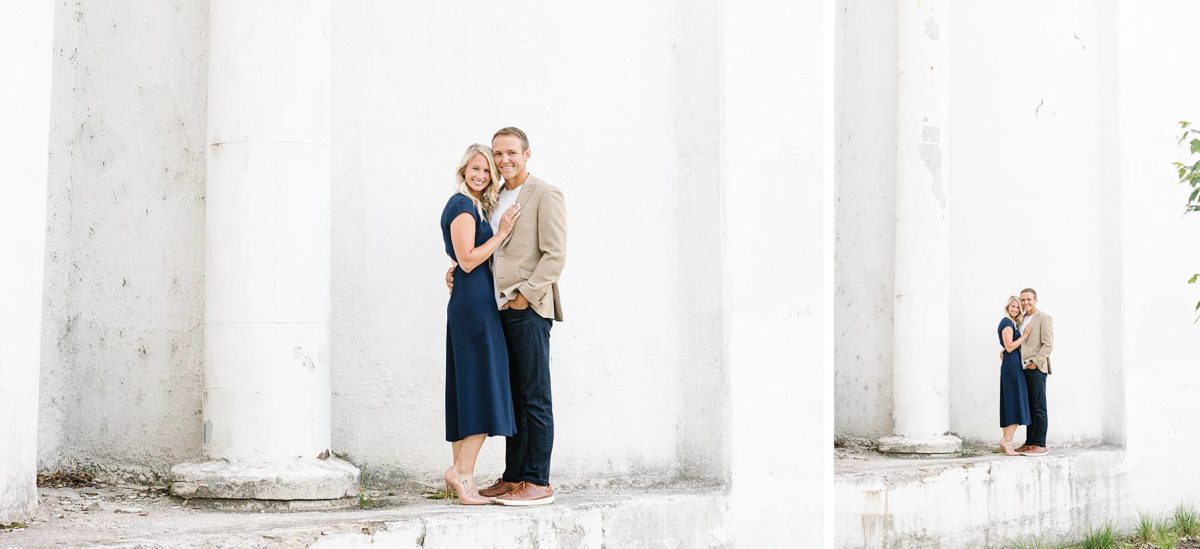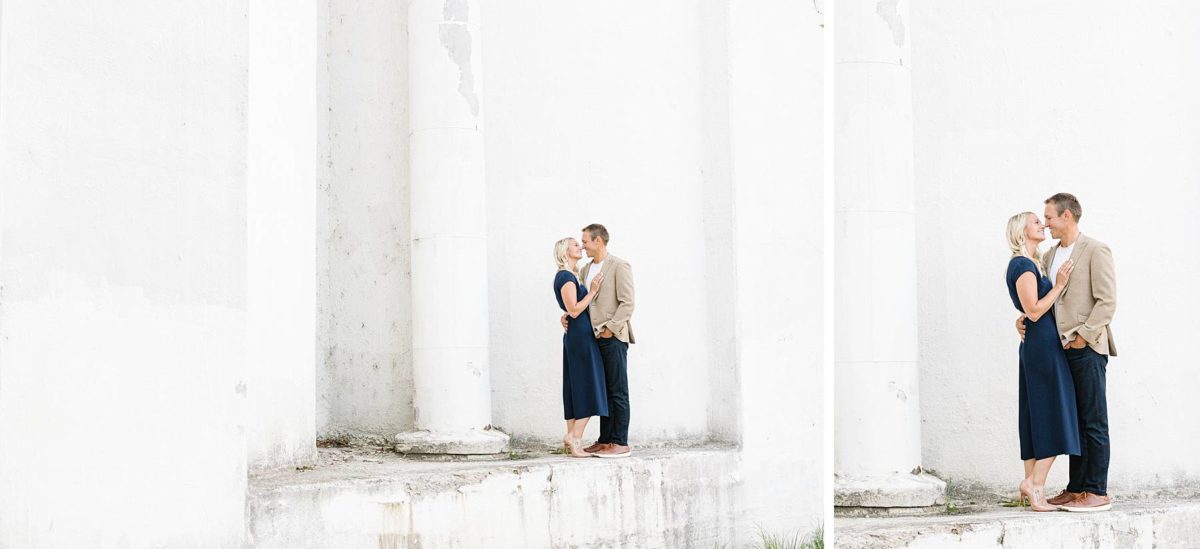July 9, 2020
Why I Chose the Canon EOS R5 over the R6 | Camera Review

Along with countless other photographers, I have been anxiously awaiting Canon’s widely-anticipated announcement of the Canon EOS R5 and the Canon EOS R6! After months of debating between which camera to pre-order, I finally came to a decision the morning of the big announcement. Both are incredible cameras – making the decision extremely difficult. There are so many factors to consider when deciding which camera to buy. As a wedding photographer, it really comes down to three main factors.
- Image quality – the images the camera produces must be of the highest quality in both color and detail.
- Usability – the camera’s layout of its buttons and menus system must function in a way that allows me to quickly and naturally capture split-second moments in time.
- Autofocus – the camera must focus quickly and accurately when using a variety of focusing methods in different situations.
When I read the rumored specifications of the Canon EOS R5 and the Canon EOS R6, both were very similar, and both not only met, but far exceeded, my expectations for image quality, usability, and autofocus. However, there was one key detail I focused on in making my final decision – their megapixel count. The Canon EOS R6 has a 20 megapixel sensor. The Canon EOS R5 has a 45 megapixel sensor. A few things I began to consider were:
- Would 20 megapixels be enough?
- Would the file sizes of a 45 megapixel camera be too large and slow down my computer?
- Would 45 megapixels be overkill for what I actually need?
In considering my first question, I examined a few of the large prints hanging on our walls at home. Many of the prints were of photos taken with one of my favorite cameras, the 22 megapixel 5D Mark III which I purchased back in 2012. Each of these prints displayed excellent detail and color and were printed in sizes of up to 20×30 inches. The largest print in our house was taken with the 18 megapixel Canon 60D and is 36×25 inches. It is a photo of my son when he was about 3 years old and was running through a puddle wearing his rain boots. I love this photo because of the detail of the splash with water droplets flying all over. Even when viewed up close, the print looks fantastic with great detail and no pixelation or image smoothing. The photo is sharp viewed both from afar and up close. After analyzing that print, I thought that 20 megapixels might be enough for the products I typically deliver to my wedding and portrait clients.
Next, I considered whether or not the file sizes of the Canon EOS R5 would be too large. Without actually shooting with the camera and working with its files, this was a difficult one to answer. In researching, I came upon DPReview’s Canon EOS R5 preview article written after they had the opportunity to actually use the camera. This article states that the file sizes were roughly 35 to 42MB. This was great news as my current camera, the Canon EOS R, produces about the same size of files. I use an iMac 27 inch Retina 5K which has had no problems rendering or editing the Canon EOS R files. I continued researching and found that the camera can photograph full resolution in C-Raw files. These files are full resolution but are slightly compressed which results in smaller file sizes with minimal loss in quality. The Canon EOS R5 can shoot in Medium and Small RAW, meaning files will have lower resolution but are still RAW files. That said, if I find the file sizes are too large, I could use these methods to save memory space.
At this point in my decision making process I was stuck. The Canon EOS R6 was much less expensive and would produce sufficient resolution, but the Canon EOS R5 offered a few more “bells and whistles” and its file sizes were closer to what I was used to working with. To make my final decision, I focused on one question: How often, and to what extent, do I crop my photos? I began to study, as we edited our images over the last few weeks, and I realized that we do crop our images, and sometimes significantly.

I frequently photograph wedding rings and then crop those images in tighter to make the rings appear larger. The 30 megapixels of the Canon EOS R allows me to crop in some before there is loss in image quality, but having 45 megapixels would allow me to crop in quite a bit more. The Canon EOS R6’s 20 megapixels, however, would hinder my ability to crop images as significantly.

I also noticed how often we crop our images to add variety in our galleries. In one of my most recent engagement sessions, I took some photos of the couple standing against a large white wall. When viewing the images in post, I wished that I had take more horizontal photos and less vertical photos and vice versa. However, I was able to remedy the situation by significantly cropping the vertical images to create horizontal photos. Had I photographed those images with only 20 megapixels, there would not have been enough detail left for the couple to print larger than an 8×10 inch print.

Lastly, there are times when we crop to adjust composition. Wedding days and portrait sessions with small children are fast paced events with rapid action which oftentimes result in images with less than perfect composition. For example, when I am trying to get a small child to laugh and take their photo at the same time, my compositions and horizon lines may not be straight. Cropping allows us to both straighten images and make adjustments to compositions.

In the end, the ability to crop significantly more was the deciding factor for me. I had been saving for this camera for over five years and even though the Canon EOS R5 and the Canon EOS R6 vary significantly in price, I felt that this factor was worth the extra investment. Ultimately, I wanted to purchase the camera that would capture the highest quality images that my clients not only deserve, but have come to expect. The Canon EOS R5 does just that. I’m now like a kid on Christmas morning and can’t wait for it to arrive at the end of the month! I am beyond excited to post a full review after having put it through the paces of a few wedding days! For now, I am just happy to have finally made the decision and love sharing my thoughts with fellow photographers who are considering either the Canon EOS R, the Canon EOS R5, or the Canon EOS R6!
Additional accessories such as memory cards and a card reader for Canon’s new cameras, along with the gear mentioned in this post can be found at the links below. *Purchasing items through these links will help support us as we continue to share additional resources and education for photographers.
- Canon EOS 60D
- Canon EOS 5D Mark III
- Canon EOS R
- Canon EOS R5
- Canon EOS R6
- CF Express Memory Card
- CF Express Card Reader
- Sandisk SD Card
For a video review of our thoughts on deciding between the Canon EOS R5 or the Canon EOS R6, check out our YouTube video:
* Shane Long Photography Affiliate Disclaimer: In an effort to be completely transparent, we want you to know that links to the products mentioned in these reviews are affiliate links, meaning that when you click on one of the links and make a purchase, we earn a small commission at absolutely no additional cost to you! We greatly appreciate your support, and any profit brought in through these affiliate links will be reinvested in providing additional education and resources to our fellow photographers! While we do not have direct affiliation to any of the products or services mentioned on this site, we stand 100% behind the products that we recommend! We will never link to products that we do not believe will benefit other photographers. Thank you so much for visiting our blog and for your support to our family!
Share post on Social